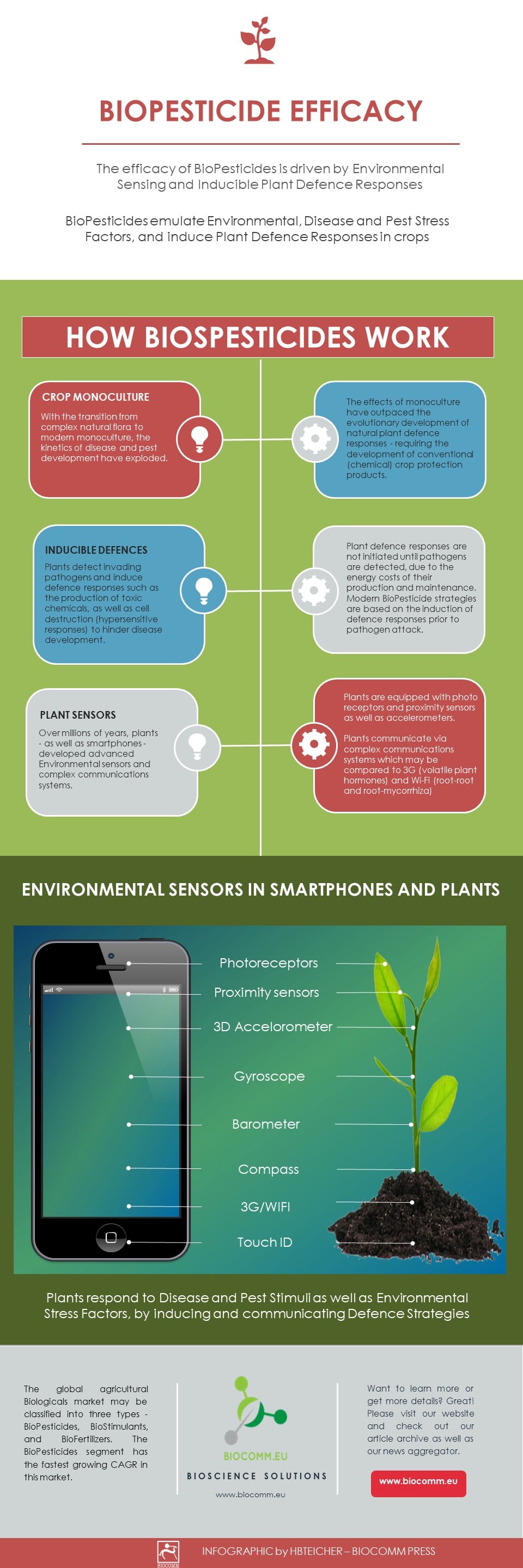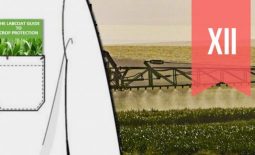BioPesticides, PART III: Efficacy – Plant Defence Induction
In this third article of a series on BioPesticides, I address issues I have experienced while mediating biology to technology-focused corporate decision-makers, and focus on on Pant Defence Induction by BioPesticides.
A little about my background
I am a plant scientist with a background in Molecular Plant Biology and Crop Protection. 20 years ago, I worked at Copenhagen University on photosynthetic responses to stress in crops. Subsequently, I worked in Australia on molecular defense mechanisms induced by Phylloxera attack in grapevine.
At that time, biology-based crop protection strategies had not taken off commercially, so I transitioned to conventional (chemical) crop protection R&D at Cheminova, later FMC.
During this period, public opinion, as well as increasing regulatory requirements, gradually closed the door of opportunity for conventional crop protection strategies, while the biological crop protection technology I had contributed to earlier began to reach commercial viability.
From January 2018, I will consolidate 17+ years of industry experience in BioScience R&D management with my academic research background, to provide independent Strategic R&D Management as well as Scientific Development and Regulatory support to AgChem & BioScience organizations developing science-based products.
For more information, visit BIOSCIENCE SOLUTIONS – Strategic R&D Management Consultancy.
BioPesticides are effective
The efficacy of biologicals is – to a large extent – driven by inducible plant defence responses evolved over more than 100 million years. These defence responses have proven to be sufficiently effective to permit the evolution of a complex flora.
The application of biopesticides in plant protection is certainly not a new innovation. My grandfather was famous for his annual ritual: from early April he would rise early and step out into his garden in order to sniff the air and watch the movement of clouds. After some days of this, he would finally grunt contentedly and order a case of beer from the nearby village.
On receiving the beer, he would call over his neighbors, and they would each ceremoniously open a bottle. After having responsibly emptied three quarters of the contents – and at signal from my grandfather – the invited guests would enthusiastically shake their bottles and spray the yeast-rich dregs over his roses.
After chuckling at this annual foolishness, the guests would leave – commenting among themselves that despite my grandfather’s strange quirks, his roses never seemed to be afflicted by mildew.
Of course, today we understand that the application of yeast cells to plant leaves leads to the induction of plant defence responses, as the plants believe themselves to be under invasion by a potential fungal pathogen.

Plant Defence Induction
Plants detect invading pathogens and initiate defence responses, such as the production of toxic chemicals. Plant defence responses are, however, not initiated until pathogens are detected, due to the energy costs of their induction and maintenance. My grandfather must intuitively have known this, as his early-morning observations would have provided him with temperature and humidity data, as well as an indication of wind direction – allowing him to predict optimal conditions for mildew inoculum to infect his roses, and to initiate what we today would call a biological strategy in good time.
With the transition over the last 70 years from complex natural flora to modern monoculture, the kinetics of disease and pest development have exploded. This effect of monoculture has led to the outpacing of the evolutionary development of natural plant defence responses – requiring the development and application of conventional (chemical) crop protection strategies.
Modern biopesticide strategies depend on the efficacy of microbial metabolites, as well as on the induction of plant defence responses by biopesticides prior to pathogen attack, and provide a viable alternative or supplement to conventional crop protection strategies. In recent years, efficacy trials demonstrate conclusively that biology-based crop protection strategies can attain an efficiency at least on par with conventional crop protection strategies.
Mediating Plant Defence Biology
An effective way for Plant Biologists to mediate an understanding of the complexity of plant environmental sensing to corporate decision-makers is to compare plant sensors to smartphone sensors. Over millions of years, plants – as well as smartphones – developed a plethora of sensors, including photoreceptors, proximity sensors and accelerometers.
In addition, plants mediate defence strategies through complex communications systems, which may be compared to 3G (volatile plant hormones) and Wi-Fi (root-root and root-mycorrhiza interactions) communications in smartphones. Plant sensors are even ahead of the latest smartphone developments – smartphone Touch ID sensors were preceded by millions of years by touch sensors in plants such as the Touch-Me-Not (Mimosa pudica), which is able to fold its leaves instantaneously when attacked by insects, or under drought conditions.
Mimosa pudica is a prime example of a plant species evolved to cope with multiple stress factors. In addition to rapid leaf folding (termed seismonastic movement), it is nitrogen-fixing, giving it a competitive advantage in low-nutrition soils. Thorns on its branches provide protection against herbivores, while it’s seismonastic movement startles insect pests, or dislodges those already alighted. The roots expel carbon disulfide, inhibiting the growth of soil pathogens, while its leaves contain the toxic alkaloid mimosine. As such, it provides a perfect tool for demonstrating plant defence responses and the potential for crops to protect themselves from insects, environmental stress and disease, and may provide valuable leads for future biopesticide development.
Other Plant Defence mechanisms
In addition to their ability to detect pathogens and insect pests and induce defence responses, plants have developed structural defences, such as lignin, which is formed within the plant cell and which makes it difficult for small insects to chew the leaves. Plant defence cells called idioblasts, or “crazy cells” protect plants against insects through their content of toxins and sharp crystals. Specialized leaf hairs, or trichomes – such as those on the surface of soybeans (Glycine max) prevent insect eggs and young larvae from reaching the leaf epidermis, as well as restricting the movement of larger larvae across the leaf surface.
For millions of years, plants have been successful at detecting invading pathogens and inducing defence responses. By coupling our increasing understanding of their defence responses and communications systems with our ability to monitor weather patterns and disease distributions, it will be possible to communicate and work together with crops to reduce production losses due to insects, weeds and diseases.
In other articles in this series, I focus on the interface between biological and conventional crop protection, analyse their current viability, define Agricultural Biological terminology and discuss drivers of BioPesticide efficacy.
Harry Teicher is the founder of BIOSCIENCE SOLUTIONS and an Authorpreneur, providing organisations with Strategic- and Project Management as well as Development & Communication solutions. Follow him on Linkedin, Twitter and Facebook.



